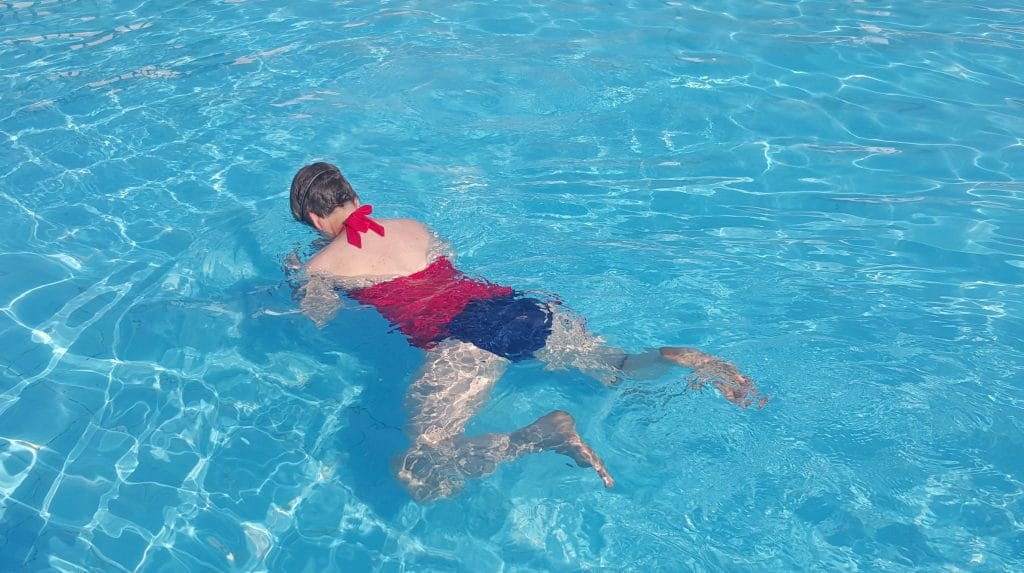Aiming for balance in the water…
“ Breaststroke and butterfly are symmetrical. The two sides of our body do the same thing at the same time. Front crawl and backstroke are asymmetrical. Like when we walk, our left and right sides balance each other through opposition.”
The thing I want maybe most from a swim is symmetry. I like to emerge from the pool into the fresh air with a feeling of balance.
All human beings tend to be asymmetrical, to twist to one side, though most of us don’t feel this when we’re moving. Any form of exercise tends to exaggerate our tendency to twist, even walking. So what about in water? What happens there?
If you have symmetrical aspirations, like I do, it’s useful to remember that there are symmetrical strokes and asymmetrical strokes. Breaststroke and butterfly are symmetrical, the two sides of the body do the same thing at the same time. Front crawl and backstroke are asymmetrical and, like when we walk, our left and right sides balance each other through opposition.
A free neck makes for a beautifully balanced breaststroke, if you organise the stroke in the right way. While butterfly may be difficult to learn, its main advantage over crawl if you want a more dynamic, muscular and cardiovascular alternative to breaststroke, is symmetry.
Asymmetry in breaststroke usually means a screw kick, one leg doing something different to the other, which it should be mirroring. The more tension in the neck and shoulders, the more wonkiness there’ll be in the legs. The cause of a screw kick is a twist in the pelvis, which is fairly easily remedied by resting the head in the water face down for the kick and glide. Free your neck to glide and let the head lead when you come up to inhale.
Backstroke and front crawl are more of a challenge for particularly asymmetrical people. For us, rotation one way is always going to be more free and easy than the other. This is why most of us have a favourite breathing side. Very good front crawl swimmers are admirable for their symmetry. A lovely example is Shinji from Total Immersion. I’ve spent far too much time on YouTube watching his effortless gliding. Sometimes I can even hear the accompanying music as I fancy myself cutting through the water like him. But deep down, even the very elite have an A side and a B side, because they’re human.
Steven Shaw has come up with a useful way of promoting balance in front crawl for ordinary people who want to swim better, not faster. He calls it centering. Before going on a journey to the left or right, the swimmer briefly returns to a neutral, central place. I find this very helpful.
It seems fair to say that, for most people, symmetrical strokes promote symmetry better than asymmetrical strokes. That’s certainly true for me. So long as I’m fully aware of that, I can continue to work on all the strokes. But breaststroke is my definite favourite at the moment.


